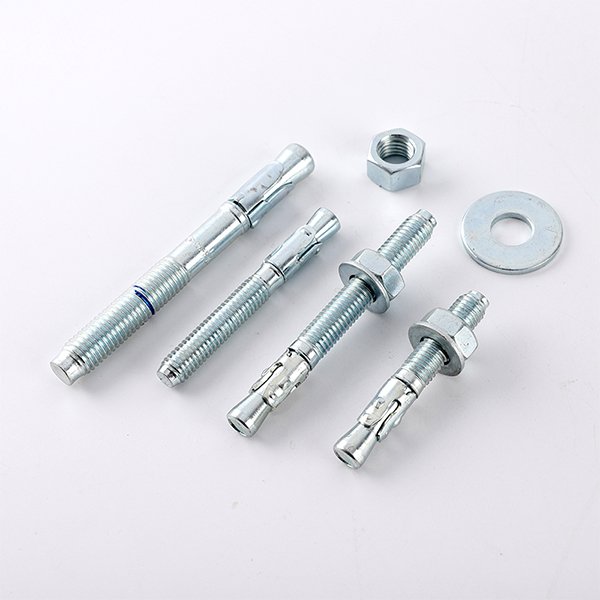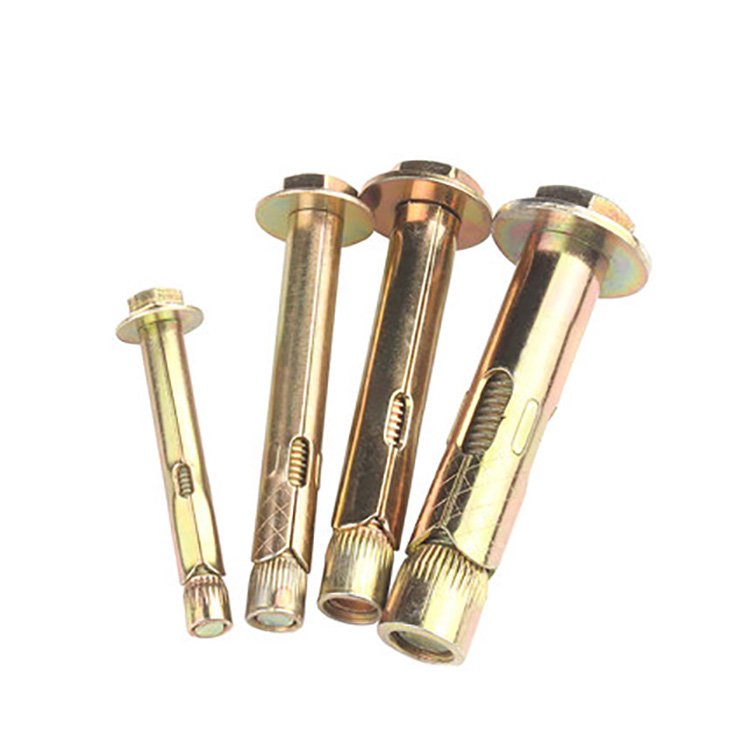Copyright © 2021 Kinfast All rights reserved. 粤ICP备06034726号 Site Map Powered by iwonder.cn
- TEL: +86-755-8347-9123
- E-MAIL: info@kfproduct.com
Anchor bolts are used extensively in concrete, brick and block masonry and cavities to make structural attachments and connections. To date, a limited amount of information has been available to aid designers and users in the selection and design of anchor bolts in various types of substrates.
In new masonry construction, anchor bolts were commonly embedded in walls and columns to support beams, plates and ledgers. However, for flexibility and ease of construction, the use of postinstalled anchors is increasing.


In prefabricated panel construction, anchor bolts are used to facilitate connections to the structural frame. Renovation and rehabilitation of existing masonry structures usually require that anchor bolts be used to attach stair risers, elevator tracks and various frame assemblages for equipment installation.
This is only a fraction of the possible uses of anchor bolts in masonry construction and with the increase of new, innovative architectural masonry designs, the uses of anchor bolts in masonry construction are likely to increase.
Anchors can be divided into two generic categories: Expansion-type anchors and Adhesive or Chemical-type anchors.
(a) Torque-controlled expansion anchors
Sleeve anchors develop their strength by the expansion of a cylindrical metal sleeve or shield into the base material as the bolt is tightened. The expansion of the sleeve along the length of the anchor provides a larger bearing surface than the wedge anchor, and is recommended for use in brick masonry.
Wedge anchors develop their hold by means of a wedge or wedges that are forced into the base material when the bolt is tightened. The wedges create large point bearing stresses within the hole
Drop in Anchors are produced to allow shallow embedment depths and are expanded or set by an impact setting tool. These are extremely suitable for installations into roof slabs. As the combination of shallow embedment and high stresses imparted by the expansion tend to cause cracking or splitting in masonry, they are not recommended for use in brick.
(b) Concrete screw
Concrete screws are screwed into pre-drilled holes. The threads will cut into the concrete and create mechanical interlock between screw and concrete. This is an expansion free fixing.
(c) Nylon based Anchors and Fixings
Wallplugs – Nylon wallplugs are placed in pre-drilled holes and screws are tightened into the plug creating the expansion. These are available in many sizes and are very versatile useful for Brick, Block and concrete. Used for light loads.
Nylon Frame Fixings – A hole is drilled through the frame and into the masonry. The whole fixing is inserted through the frame into the masonry and the screw tightened. These fixings are available in various head styles and plug designs to make them suitable for multiple applications in Brick, Block, Concrete, Aerated concrete, hollow bricks etc.
(d) CAVITY Fixings where objects need to be fixed onto plasterboard and other wall and ceiling
cavities.
However, we have already known how to fix anchor fastener now. Kinfast believes that screw is small, responsibility is big. If you are looking for a reliable merchandise of screws, Kinfast is a good choice for you. Contact us now!